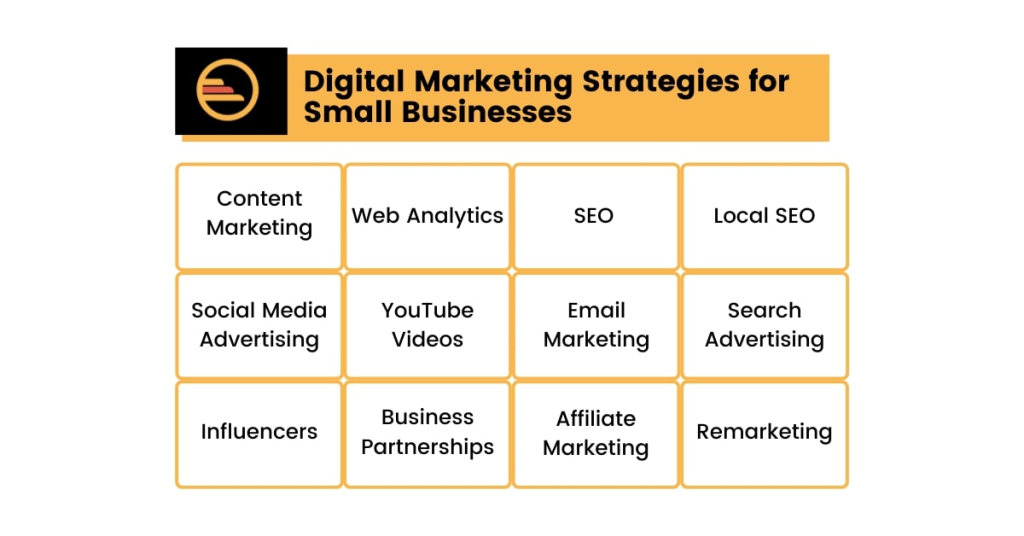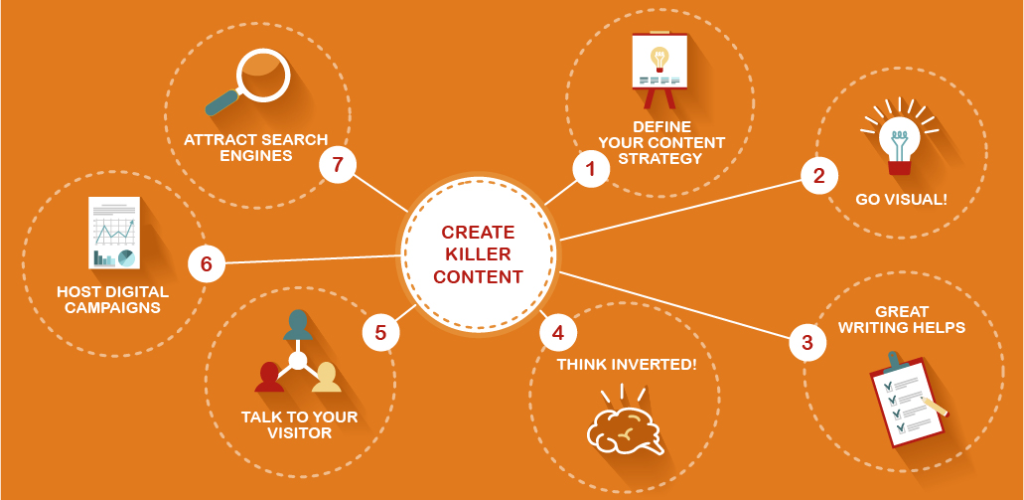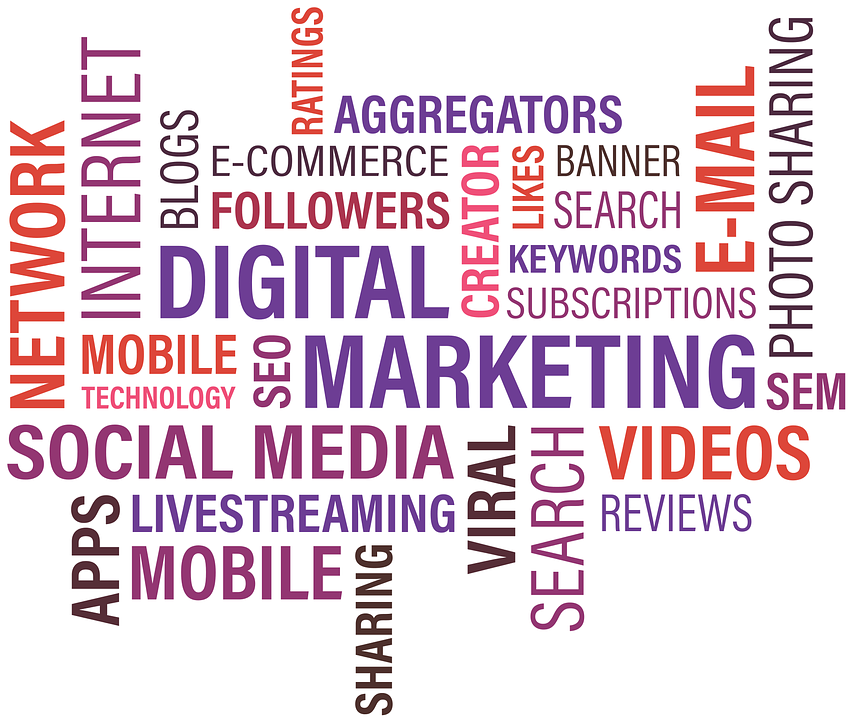In the fast-paced digital age, content marketing has become an indispensable tool for small and medium-sized enterprises (SMEs). Imagine having a magical lamp that guides your customers directly to your doorstep with engaging and inspiring content.
This is exactly what content marketing can do. It’s not just words and images on the internet; it’s an open dialogue between you and your target audience, building trust, enhancing loyalty, and turning followers into loyal customers.
In this article, we will explore how SMEs can use content marketing to attract new customers in innovative and effective ways.
From identifying your target audience to creating irresistible content, from smart distribution strategies to measuring success, we’ll guide you step-by-step to build a content marketing campaign that captures attention and delivers results. Join us on this exciting journey towards business success through the power of words and images.

What is content marketing?
Content marketing is a marketing strategy that involves creating and sharing valuable, relevant, and consistent content to attract and retain a clearly defined audience – ultimately, to drive profitable customer action.
The importance of content marketing for SMEs
Content marketing is crucial for SMEs as it helps to build brand awareness and trust among potential customers by providing them with valuable and relevant content.
It is a cost-effective way for SMEs to establish their authority and engage with their target audience, ultimately leading to increased customer retention and sales.
Understanding the target audience
Understanding the target audience is a critical aspect of effective marketing.
It involves gathering information about the characteristics, needs, preferences, and behaviors of the people or groups who are most likely to use a company’s products or services.
By gaining a deep understanding of their target audience, companies can create content that resonates with them and tailor their marketing strategies to effectively reach and engage with them.
This leads to better customer relationships, increased brand loyalty, and ultimately, improved business performance.
Planning a Content Marketing Strategy for SEMs

Planning a content marketing strategy for SMEs involves several key steps.
First, SMEs must define their target audience and develop a deep understanding of their needs and interests. Next, they must identify the types of content that will resonate with their audience and create a content calendar to ensure consistency.
SMEs should also establish metrics to measure the success of their content marketing efforts and adjust their strategy accordingly. Finally, they should leverage various channels, such as social media, email marketing, and SEO, to distribute and promote their content to reach their target audience effectively.
Setting goals and objectives
Setting clear goals and objectives is a crucial step in developing a successful content marketing strategy.
Goals are broad, long-term aspirations that a company hopes to achieve, such as increasing brand awareness or driving more sales.
Objectives, on the other hand, are specific, measurable, and achievable targets that help a company reach its goals.
When setting goals and objectives for content marketing, SMEs should ensure they are aligned with their overall business objectives and use specific metrics, such as website traffic, social media engagement, or lead generation, to measure their success.
This allows SMEs to track progress and adjust their strategy accordingly.
Defining the target audience
Here are the steps for defining the target audience:
- Conduct market research to understand the industry landscape, trends, and competition.
- Gather demographic information about potential customers, such as age, gender, income, education level, and location.
- Identify the psychographic characteristics of potential customers, such as interests, values, and attitudes.
- Create buyer personas that represent the target audience and capture their motivations, pain points, and purchasing behavior.
- Analyze existing customer data, such as purchase history and customer feedback, to refine the buyer personas.
- Use surveys, focus groups, or customer interviews to gain additional insights and validate the buyer personas.
- Continuously monitor and update the buyer personas based on changes in the industry, customer feedback, or new data.
By following these steps, SMEs can develop a deep understanding of their target audience and create a more effective marketing strategy that resonates with them.
Conducting a content audit
To conduct a content audit, SMEs should follow these steps:
- Compile a comprehensive list of all existing content, including blog posts, videos, infographics, and social media posts.
- Categorize the content by topic, format, and channel.
- Evaluate the performance of each piece of content based on metrics such as page views, engagement, and conversions.
- Assess the relevance and accuracy of each piece of content, ensuring that it aligns with the target audience’s needs and interests.
- Identify gaps in the content, areas for improvement, and opportunities for repurposing or updating existing content.
- Develop an action plan based on the findings to improve the content strategy and achieve the desired outcomes.
By conducting a content audit, SMEs can gain valuable insights into their existing content and identify areas for improvement to create more effective and relevant content that resonates with their target audience.
Keyword research and selection
Keyword research and selection involves identifying the words and phrases that people use when searching for information related to a company’s products or services.
By selecting relevant keywords, SMEs can optimize their content to appear higher in search engine results and increase their visibility to potential customers.
Creating a content calendar
Creating a content calendar is an essential step in a content marketing strategy.
It involves planning and scheduling all content to be published across different marketing channels, such as blogs, social media, and email campaigns.
The content calendar ensures consistency and allows SMEs to align their content with specific marketing goals and objectives. It also helps SMEs to track progress, identify gaps, and make necessary adjustments to improve their content strategy.
Creating High-Quality Content
High-quality content is engaging, informative, and valuable to the target audience.
By creating high-quality content, SMEs can establish themselves as thought leaders in their industry, build trust with their audience, and ultimately increase conversions and sales.
To create high-quality content, SMEs should follow these steps:
Understanding the different types of content
To create a diverse and effective content marketing strategy, SMEs should understand the different types of content they can produce.
Here are some examples of the most common types of content:
- Blog posts: Informative and educational articles that provide value to the target audience.
- Infographics: Visual representations of information or data that are easy to digest and share.
- Videos: Engaging and interactive content that can be used for tutorials, product demonstrations, or brand storytelling.
- E-books: Comprehensive guides or resources that offer in-depth information on a particular topic.
- Case studies: Real-life examples of how the company’s products or services have helped customers solve a problem or achieve a goal.
- Whitepapers: In-depth reports or analyses of a particular industry, trend, or issue.
- Social media posts: Short, attention-grabbing messages that can be used to promote products or services, share content, or engage with the audience.
- Webinars: Online seminars or workshops that provide education or training on a specific topic.
By understanding the different types of content, SMEs can choose the ones that best fit their marketing goals and effectively engage their target audience.
Writing for the target audience
When writing content, it’s crucial to keep the target audience in mind.
SMEs should consider their audience’s interests, needs, and level of knowledge to create content that resonates with them.
Writing for the target audience helps SMEs to establish trust, build relationships, and ultimately drive conversions and sales.
Crafting attention-grabbing headlines and titles
Crafting attention-grabbing headlines and titles is essential for capturing the target audience’s attention and encouraging them to read the content.
SMEs should use clear, concise, and compelling language that communicates the value of the content and entices the reader to engage with it.
Headlines and titles should be relevant, informative, and evoke curiosity to generate interest and increase click-through rates.
Incorporating visuals into the content
Incorporating visuals such as images, videos, and infographics into the content can significantly enhance the audience’s engagement and understanding.
Visuals can break up large blocks of text, add context, and make the content more visually appealing.
SMEs should use high-quality and relevant visuals that complement the text and help communicate the message effectively.
Incorporating visuals can increase the content’s shareability and overall effectiveness.
Optimizing the content for search engines
Optimizing the content for search engines is an important step in content marketing.
By using relevant keywords, meta descriptions, and tags, SMEs can improve their content’s visibility and search engine ranking.
Effective optimization can increase the content’s reach, attract more organic traffic, and ultimately drive conversions and sales.
SMEs should use SEO best practices to ensure their content is optimized for search engines while still providing value to the target audience.
Promoting the Content
Creating great content is not enough. SMEs must promote their content to reach their target audience.
Promoting the content on social media, email newsletters, and other relevant platforms can increase its visibility and generate traffic to the website.
Paid advertising can also be used to boost reach and engagement.
Using social media to promote the content
Social media is a powerful tool for promoting content and reaching a wider audience.
SMEs should identify the social media platforms their target audience is most active on and use them to share and promote their content.
They can also use paid social media advertising to increase the content’s reach and engagement.
Effective social media promotion can help SMEs build brand awareness, drive traffic to their website, and ultimately generate conversions and sales.
Email marketing tactics
Email marketing is an effective way to promote content and engage with the target audience.
SMEs can use tactics such as
- personalized email subject lines
- segmenting their email lists based on the audience’s interests and behaviors
- including a clear call-to-action to encourage engagement.
They can also use email marketing to nurture leads and build relationships with potential customers, providing them with valuable information and resources.
Effective email marketing can help SMEs stay top-of-mind with their audience and drive conversions and sales.
Paid advertising
Paid advertising can be an effective way for SMEs to promote their content and reach a wider audience.
Paid advertising options include search engine ads, social media ads, display ads, and native advertising.
SMEs should set clear goals and budgets for their advertising campaigns and target their ads to their specific audience to maximize their impact.
Search engine optimization (SEO) techniques
Search engine optimization (SEO) is the process of improving a website’s visibility and search engine ranking.
SMEs can use SEO techniques such as keyword research and optimization, creating high-quality content, optimizing website structure and navigation, and earning backlinks from reputable sources.
Effective SEO can increase organic traffic to the website, improve the website’s credibility, and ultimately drive conversions and sales.
SMEs should regularly monitor and update their SEO strategies to ensure they are keeping up with search engine algorithm updates and changes in the industry.
Measuring Success and Refining the Strategy

Metrics such as website traffic, engagement rates, and conversion rates can help SMEs understand how their content is performing and identify areas for improvement.
Based on the data collected, SMEs can refine their strategy, adjust their tactics, and create more effective content that resonates with their target audience.
Regularly measuring and refining the content marketing strategy can help SMEs stay competitive, drive growth, and achieve their business goals.
Identifying key performance indicators (KPIs)
KPIs are measurable goals that help SMEs track progress and determine whether they are achieving their objectives.
Common KPIs for content marketing include website traffic, engagement rates, conversion rates, social media metrics, and revenue generated from content.
Tools for measuring the success of content marketing efforts
There are various tools available to SMEs to measure the success of their content marketing efforts.
These include Google Analytics, which can track website traffic and user behavior, social media analytics tools such as Hootsuite and Sprout Social, which can track engagement rates and social media metrics, email marketing tools such as Mailchimp, which can track email open rates and click-through rates, and marketing automation tools such as Hubspot, which can provide a comprehensive view of marketing efforts across multiple channels.
Maintaining Consistency and Building Authority
Consistency involves regularly publishing content that aligns with the brand’s messaging and meets the needs and interests of the target audience.
By consistently delivering high-quality content, SMEs can build trust with their audience and establish themselves as a reliable source of information.
Building authority involves establishing SMEs as thought leaders in their industry by creating content that showcases their expertise and providing value to their audience.
By maintaining consistency and building authority, SMEs can differentiate themselves from competitors, attract and retain customers, and drive business growth.
Building Trust through Content Marketing
By creating high-quality, informative, and engaging content that meets the needs and interests of their target audience, SMEs can establish themselves as a reliable source of information and build trust with their audience.
To build trust through content marketing, SMEs should focus on creating content that is transparent, authentic, and empathetic, addressing their audience’s pain points and concerns, and providing valuable solutions to their problems.
Understanding the concept of E-E-A-T (Expertise, Expertise
Authority, Trustworthiness)
E-E-A-T stands for Expertise, Authority, and Trustworthiness, and it is a concept that Google uses to evaluate the quality and relevance of content for its search engine rankings.
- Expertise refers to the level of knowledge and skill a person or organization has in a particular field.
- Expertise
- Authority relates to the reputation and influence that a person or organization has in a specific industry.
- Trustworthiness refers to the level of confidence and reliability that people have in a brand or individual.
In content marketing, creating content that demonstrates high levels of expertise, authority, and trustworthiness can help to improve a brand’s online visibility, attract more traffic to its website, and establish its reputation as a trusted source of information in its industry.
Using customer reviews and testimonials
Customer reviews and testimonials can be powerful tools for SMEs to build credibility and trust with potential customers.
To use them effectively, SMEs can start by collecting reviews and testimonials from satisfied customers, either by requesting them directly or using third-party platforms like Yelp, Google My Business, or Trustpilot.
Once they have collected a sufficient number of reviews, SMEs can leverage them by displaying them prominently on their website, social media profiles, and other marketing materials.
They can also incorporate them into their content marketing strategy, by creating case studies, success stories, or customer spotlight articles that highlight the positive experiences of their customers.
Creating case studies and success stories
By highlighting real-world examples of how their solutions have helped other customers solve specific problems or achieve specific goals, SMEs can build credibility, establish trust, and differentiate themselves from their competitors.
Building a brand voice and messaging
It involves developing a unique tone, style, and language that reflects the brand’s personality and values, and aligns with the target audience’s preferences and needs.
This can be achieved through various communication channels, including website content, social media posts, email marketing, and advertising.
Top marketing companies in Dubai
Dubai is a hub of innovation and economic growth, and at the heart of its marketing landscape is 2P, a leading marketing agency that stands out for its comprehensive and tailored marketing solutions.
Why Choose 2P?
2P specializes in a wide range of marketing services designed to meet the unique needs of your business. From digital marketing and content creation to social media management and brand development, 2P has the expertise to elevate your brand and drive measurable results.
- Digital Marketing: Boost your online presence with targeted campaigns and data-driven strategies.
- Content Creation: Engage your audience with compelling and creative content.
- Social Media Management: Build a loyal following and interact with your customers effectively.
- Brand Development: Establish a strong and memorable brand identity.
At 2P, the focus is on delivering customized solutions that align with your business objectives and help you achieve sustainable growth.
Ready to Transform Your Business?
Partner with 2P today and take your marketing efforts to the next level. Visit their website at 2p.ae to learn more about their services and how they can help you succeed in the competitive Dubai market.
Don’t wait! Contact 2P now and start your journey towards unparalleled marketing success.
Conclusion
The benefits of content marketing for SMEs
In conclusion, content marketing can bring numerous benefits for SMEs, including increasing brand awareness, attracting new customers, building credibility and trust, and improving search engine rankings.
The need for continuous refinement and analysis of the content marketing strategy
Regularly measuring and evaluating key performance indicators, such as website traffic, engagement rates, and conversion rates, can provide insights into what is working and what needs improvement, enabling SMEs to optimize their content marketing efforts for maximum impact.
Read more:
FAQs
What is content marketing, and why is it important for SMEs?
Content marketing delivers a higher ROI than traditional advertising. Building trust with your customers can result from providing meaningful content that builds a relationship with them
How do I determine the target audience for my content marketing strategy?
7 Ways to Determine Your Target Audience
Analyze Your Customer Base and Carry Out Client Interviews.
Conduct Market Research and Identify Industry Trends.
Analyze Competitors.
Create Personas.
Define Who Your Target Audience Isn’t.
Continuously Revise.
Use Google Analytics.
How do I measure the success of my content marketing efforts?
6 Content Marketing Metrics to Measure Success
Web Traffic by Source/Medium. For many content marketers, site traffic is a key metric come reporting time.
User Behavior. On their own, user behavior metrics don’t tell you much.
Impressions & CTR.
Content Shares & Backlinks.
Keyword Rankings.
Lead Generation.
How do I build authority and trust through content marketing?
Building authority and trust through content marketing involves demonstrating expertise, credibility, and reliability by providing valuable, accurate, and relevant information to your audience, leveraging customer reviews and testimonials, and highlighting your industry leadership and thought leadership through case studies and success stories.

